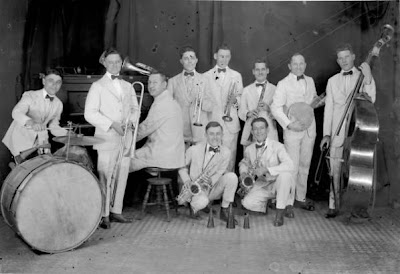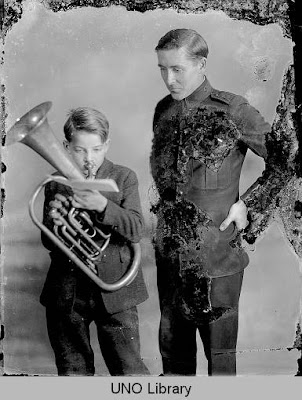
Rube Goldberg once opined that most people would rather do things the hard way than the easy way. And he should know, since he made a great living lampooning that all too human tendency.
Reuben Lucius Goldberg was born in San Francisco on July 4th, 1883, and died on December 7th 1970. He was an engineer, a sculptor, an inventor, and a Pulitzer Prize winner, but he will always be best remembered for his cartoon schematics of elaborate devices built to accomplish (relatively) simple tasks.
Here's one now:

and another:

Both of these are from his site,
www.RubeGoldberg.com, where you can find a huge amount of information about Goldberg, his times and his influence on our time.
Lots of the information has to do with the current mania for building Goldberg-ian machines (lots of them use marbles for some reason) as an intellectual exercize, like Sudoku, I guess. Competitions are sponsored by and held at college campuses around the country. You Tube has a plethora of short films based on Goldberg's constructs or what nowadays passes as a Goldberg construct.
It seems to me that these kind of miss the point. Although marble shoots are way fun, getting an object to travel from here to there is only part of the Goldberg construct. What's more interesting is the random aspects of the construct, the predictions of behavioral characteristics built on shrewd observation, and social commentary. Okay: what?
Let's break one down. This is called Dodging Bill Collectors.

In order for this to work, a college boy has to mistake a tailor's audible measurements for football signals and tackle a dummy, and you have to be whitewashed so that you look like a statue and not (presumably) your deadbeat self. Why a college boy? Because they are football obsessed. A delivery boy would not mistake these measurements for football signals. Smart, huh? Why whitewash? Because it's white, the same color as marble statues.
What I'm trying to say here, is none of this would work. In all the films and competitions and "in- the- manner- of" contemporary Goldberg tributes, everything works. They all ring bells or trigger Slinkies or whatever. They're built on machine- driven cause and effect. Check out this You Tube video:
http://www.youtube.com/watch?v=H30zTv406Mo&feature=fvstBut Goldberg's things could never work. At least I hope they couldn't because they're not supposed to. They're commentary. They're satirical. Here's one having to do with people exclusively:

This is more like it. It's not that the system works, it's about making one think the system works. Clearly, the
system doesn't work.

 The opening pages from an article in Modern Mechanix magazine
The opening pages from an article in Modern Mechanix magazineGoldberg is trying to tell us something in such a beautiful and subtle way that the message has gotten lost in an elaborate Chutes and Ladder fantasy. He's saying, yes, it's entertaining and yes, it's insighful, but, no, it's not going to work. Everyday (it seems) someone tells me about a plan of theirs designed to bring about a specific result. And I always think, wow. Rube Goldberg. He's doing it again.
This is why Mr. Goldberg's constructs continue to be relevant today- they're everywhere! They're in American foreign policy and economic recovery. They're in the space program (Tang!) and our daily copings with the current economic situation. They're in movies and books and every level of our popular culture, from video games to the concept of recycling.
Rube didn't invent these machines, but he found them and brought them to our attention. Now it's up to us to see if they're ever going to work.
 The title card of a film Rube made with the original Ted Healey's Stooges
The title card of a film Rube made with the original Ted Healey's Stooges
 I took this picture of Reverend Craig Eder, (September 6th, 1919 to November 22nd, 2009) back in the early '80's. My friend George Ferris and I decided to photograph as many of our old St. Albans teachers as we could find. George set up the appointments and I did the photography.
I took this picture of Reverend Craig Eder, (September 6th, 1919 to November 22nd, 2009) back in the early '80's. My friend George Ferris and I decided to photograph as many of our old St. Albans teachers as we could find. George set up the appointments and I did the photography.































